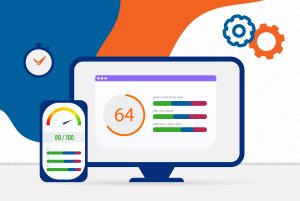 How often should you redesign your website? The simple answer for the life science community is every 2-3 years. Based on your company's unique goals, how your products tie into the latest technology and how you interact with your customers, your timeline may vary.
How often should you redesign your website? The simple answer for the life science community is every 2-3 years. Based on your company's unique goals, how your products tie into the latest technology and how you interact with your customers, your timeline may vary.
According to Hubspot’s “The Science of Website Redesign," 68% of companies surveyed had redesigned their websites within the last 12 months. An additional 16% had redesigned their sites within the past two years.
What Is Redesign?
What does a website redesign entail? Redesigning a website is more than just making it look pretty or more modern than your competition's websites. During a redesign, the structure of your website can be changed to allow for new functionality. You can incorporate ecommerce, a CRM or connect your website to your accounting software. A redesign is also a perfect opportunity to connect your site to social media or set up your architecture to be more search engine friendly.
In the biotech market, it is imperative that new products and technologies are explained, shown and launched in ways that match today's online and device-based technological capabilities. For example, a new medical device with a selling proposition based on sleek design and ease of use should have an online experience that matches its claims.
Do You Need a Redesign?
If you answer no to any of these questions, you should consider a website redesign to ensure that you are reaching your customer base on its preferred browsing medium (see WebUsability for information on devices and demographics).
Your website should give each user the best possible web experience regardless of whether they are accessing your website from a desktop or a device.
Regular updates to your website keep visitors coming back and help with your SEO efforts.
Many companies redesign their websites to incorporate lead generation techniques or integrate a CRM.
Healthy websites show constant growth in visitors, or at least hold steady. Your traffic over time can indicate visitor satisfaction with the information provided on your site.
Clear, user-friendly navigation helps visitors convert to customers quicker.
Building your site with the proper structure in place assists both human eyes and search engines, which drive those human eyes to your website.
If your website looks out of date compared to your competition, it is time for a facelift.
Older websites may not be compatible with the latest browsers, which can have a negative effect on your website traffic.
Product and service information, distributor lists, company profiles, etc. can quickly become outdated without regular website maintenance.
If your business is on social media, your website should reflect that activity. Animations, interactive PDFs, videos and other digital media can help you communicate the benefits of your products and services.
Get Measureable Results
Redesigning your website provides multiple opportunities to increase your website’s ROI. Whether you need a design facelift to outpace the competition or reflect corporate changes, or you are looking to update functionality to improve user experience and increase customer engagement, website redesigns typically result in a 70% – 500% ROI (Forrester).
Here are just a few of the many ways a website redesign can affect your bottom line:
| Increased Conversion Rates According to Forrester, B2B websites see an increase of 20-50% on their conversion rates following a redesign. Websites redesigned with calls to action and a user experience that guides visitors through your lead generation process see the greatest return. |
| Improved SEO As you improve the quality of your website content and hone your top-level navigation to make your website easier to use, your SEO will be impacted positively. Keywords that help you target quality traffic can be built into your content and website structure during a redesign. |
| Brand Building Your website should accurately reflect how you want your company to be perceived, and must coordinate with all of your other marketing initiatives. A redesign gives you the opportunity to not only increase your level of professionalism in terms of the look, but also to apply any existing rebranding efforts to your online presence. |
| Reach New Users If you don't have a mobile-friendly website, you are not putting your best foot forward to 30% of your potential audience. Creating a responsive or adaptive website increases your reach to tablet and smartphone users, providing them with information and calls to action designed to function on their devices – allowing you to do business with anyone, anytime. |
| Repeat Visitors Returning website visitors tend to increase with redesigns that put a focus on content that will be updated regularly. Giving visitors a reason to come back to your website keeps you top-of-mind and helps nurture leads through your sales cycle. |
| Networking A website redesign is the perfect opportunity to integrate social media (links, sharing, blogs, apps, feeds, etc.), making it easier for customers to connect with you and your message socially. It is also important to remember that customers may interact with you on multiple mediums in different capacities. Perhaps they connect with a sales rep on LinkedIn and then visit your website to find product features. Be consistent in your messaging on all networks. |
Is a Website Alone Enough?
Once your new website has been launched, it doesn't end there. Regular content updates are imperative to maintain customer interest. Your new website can also be integrated with other marketing initiatives ranging from SEO and social media to email marketing and direct mail.
According to Forrester's "Multichannel Maturity Mandate," 40% of companies employing integrated marketing campaigns across multiple channels saw more than a 15% increase in revenue that was directly attributable to those marketing efforts.
To learn more about how a website redesign could benefit your company, contact Jane Cirigliano.
Subscribe To Our Newsletter
Get updates and learn from the best
More To Explore

Website Content That’s Good Enough to EEAT
Generative AI might be taking over, but content is still king. If your website isn’t ranking the way it should, Google’s E-E-A-T signals might be

Does Website Speed Matter?
When it comes to websites, speed isn’t just a technical detail. While it’s clear and easy to say that website speed matters, it’s still important
